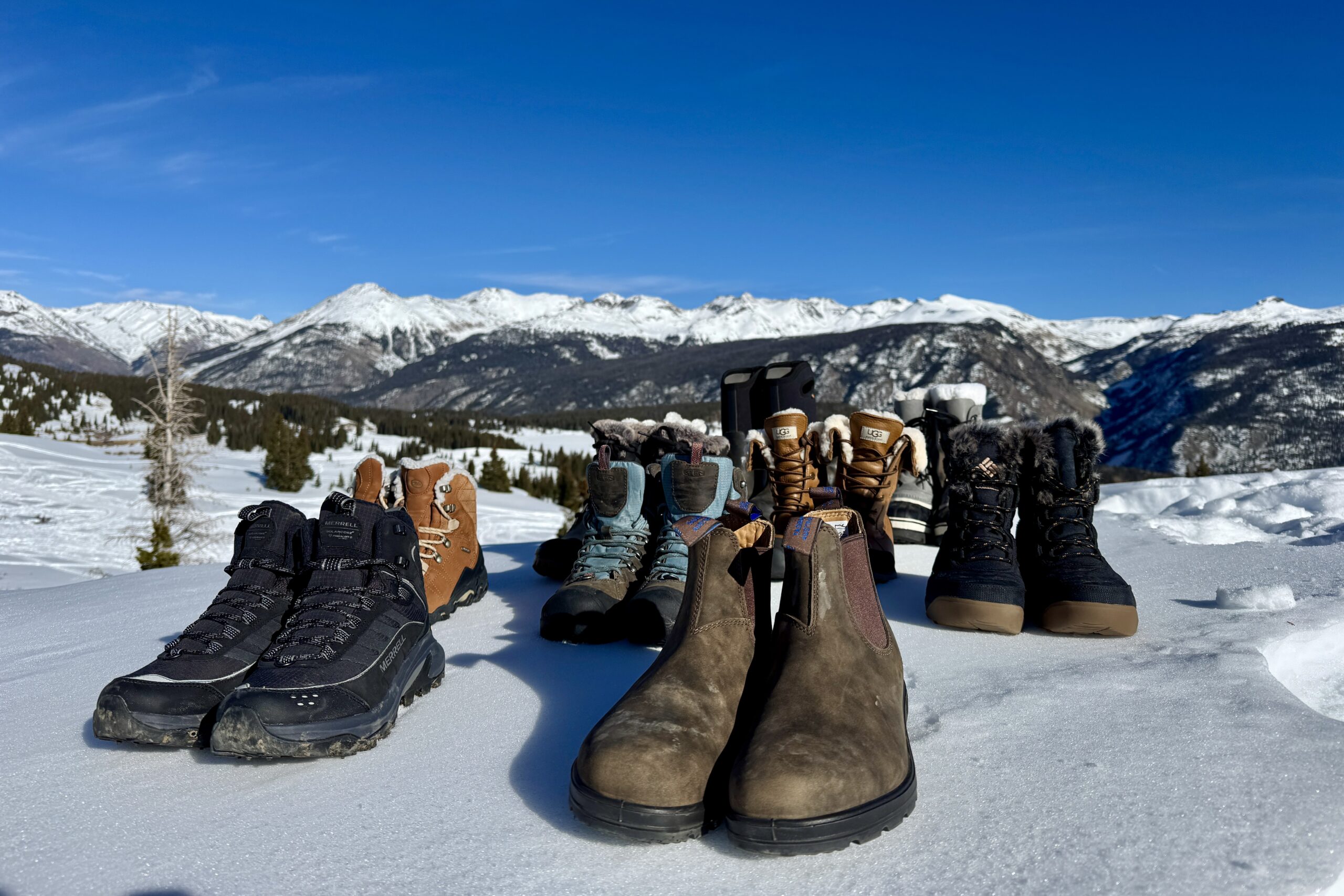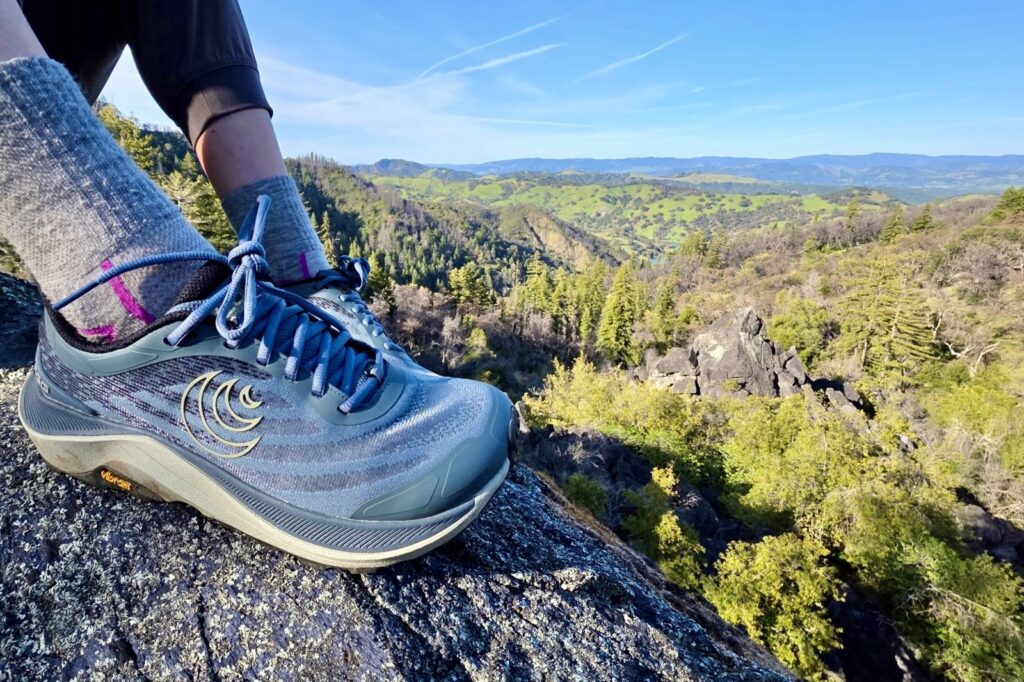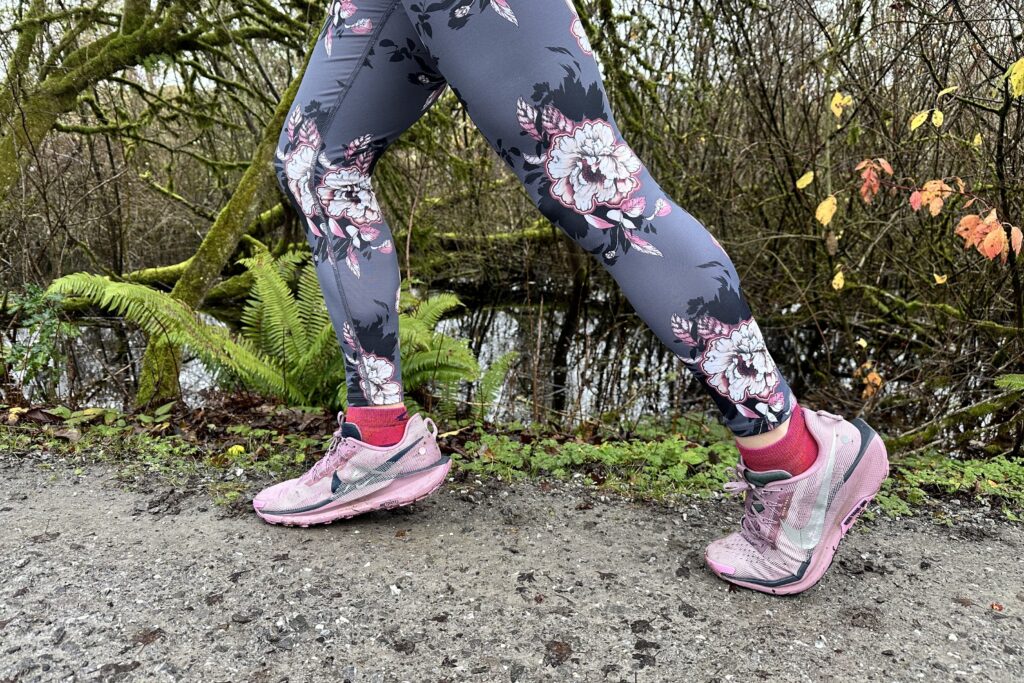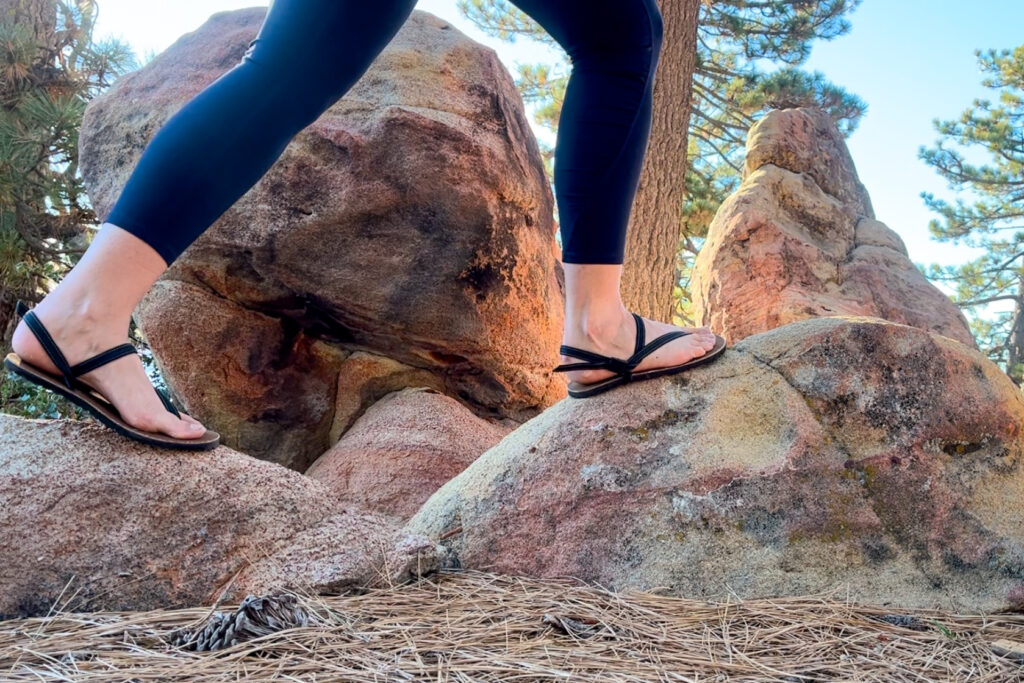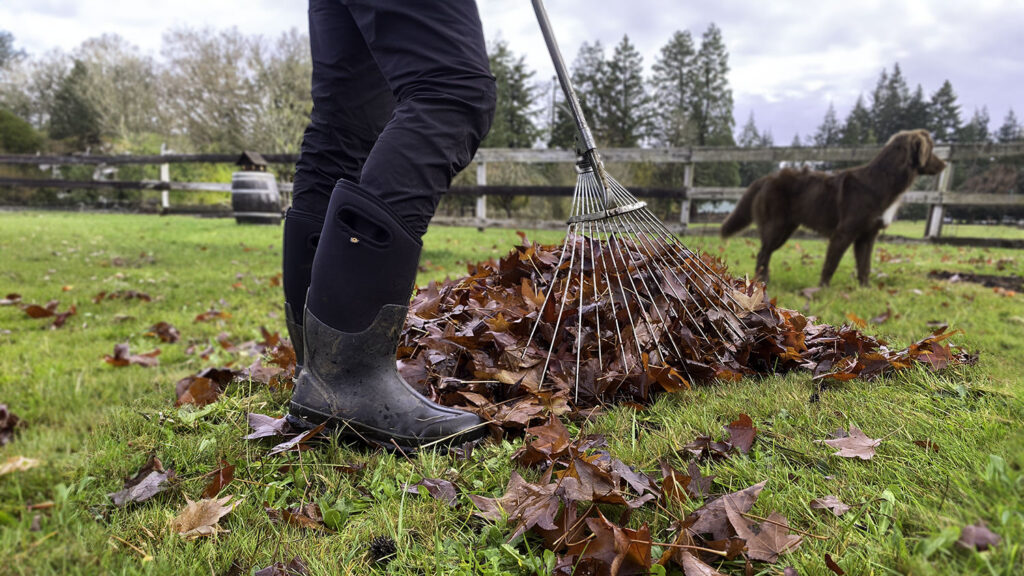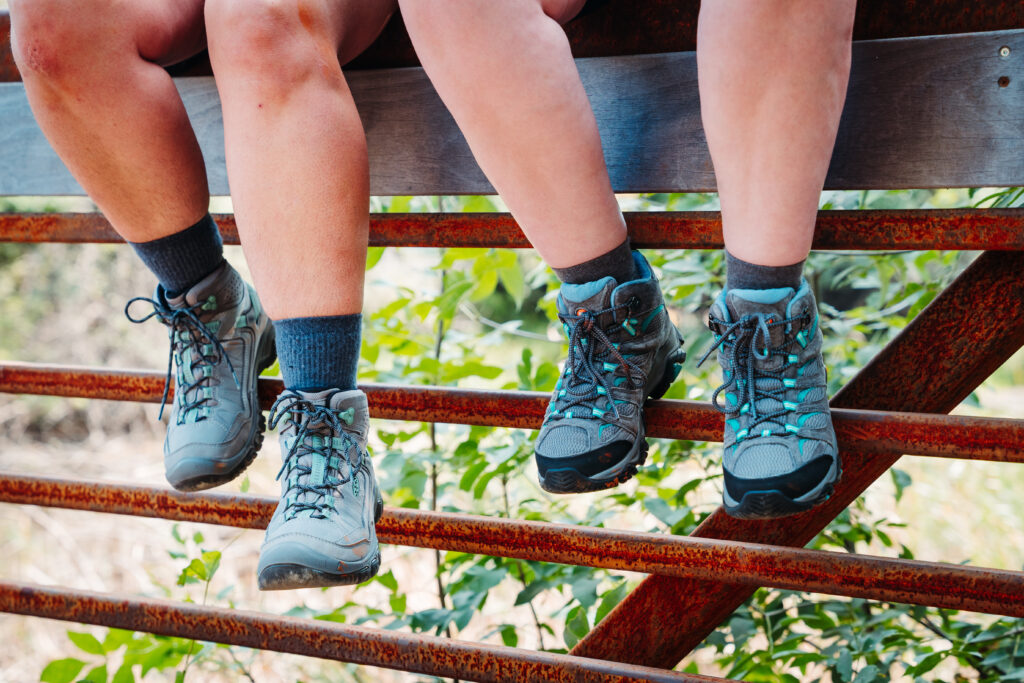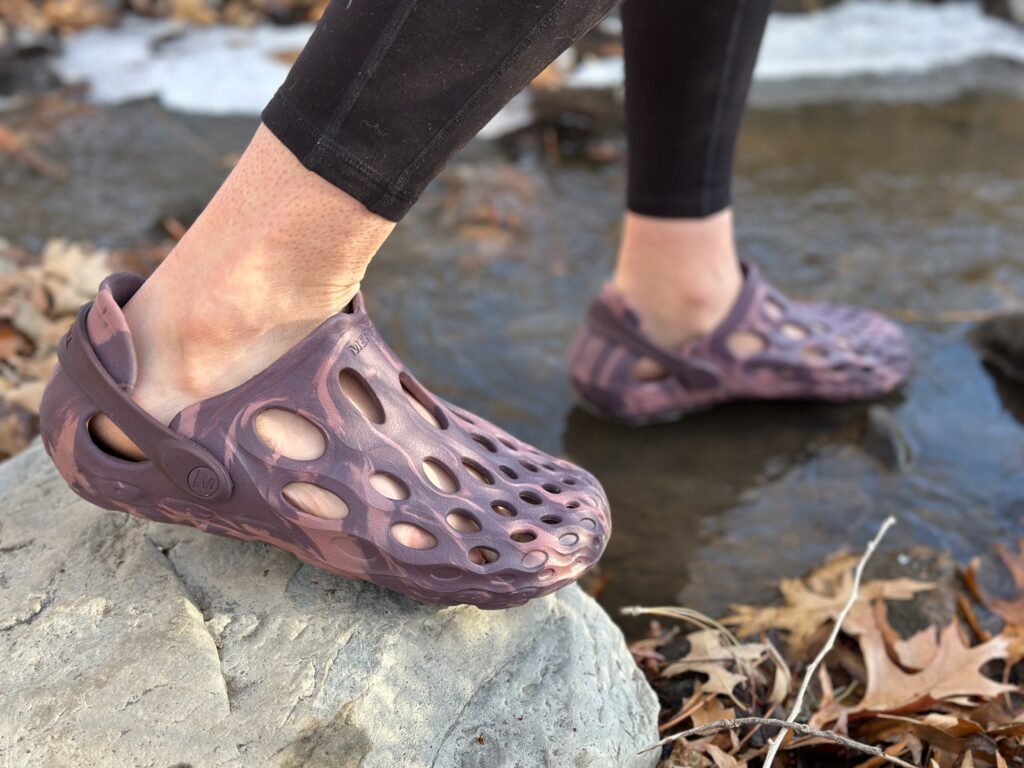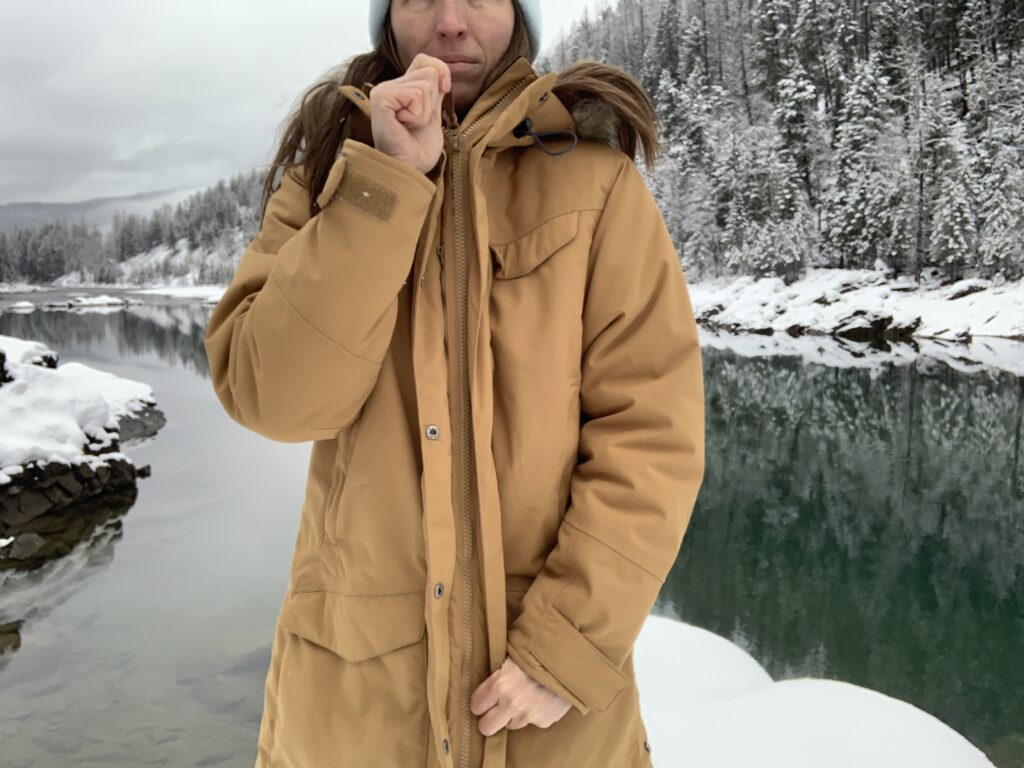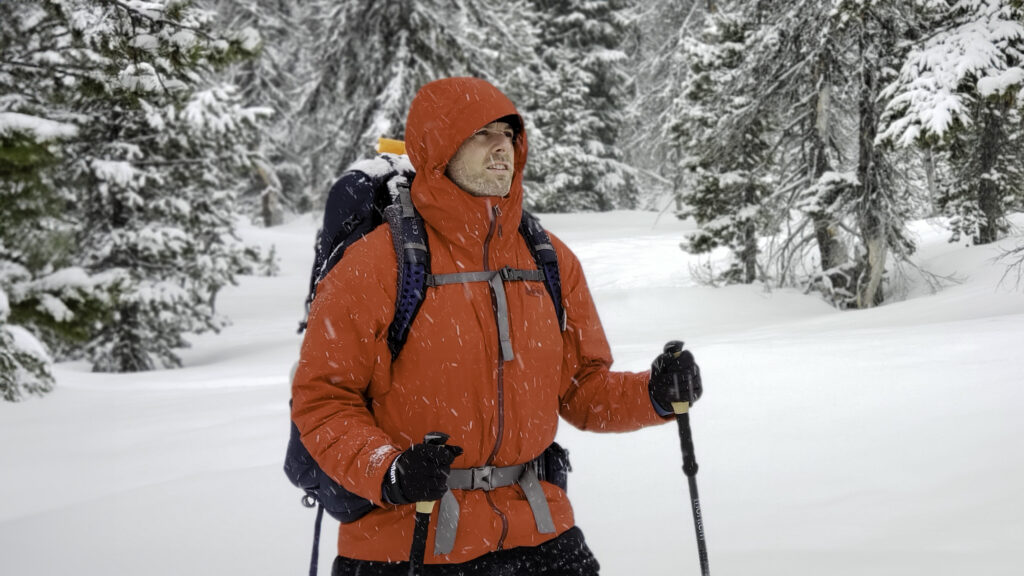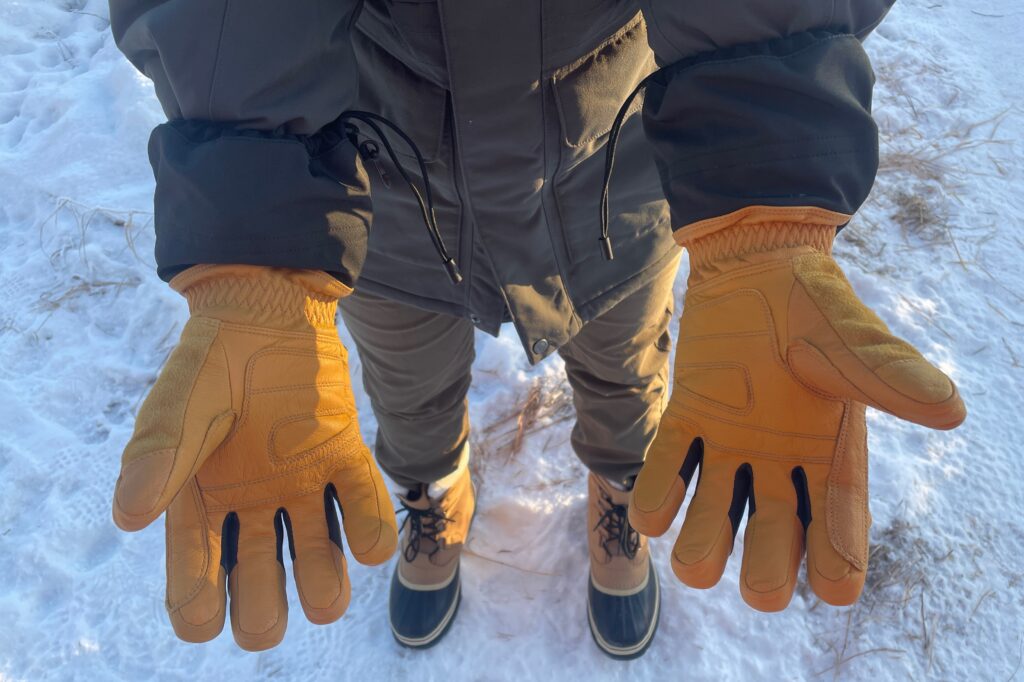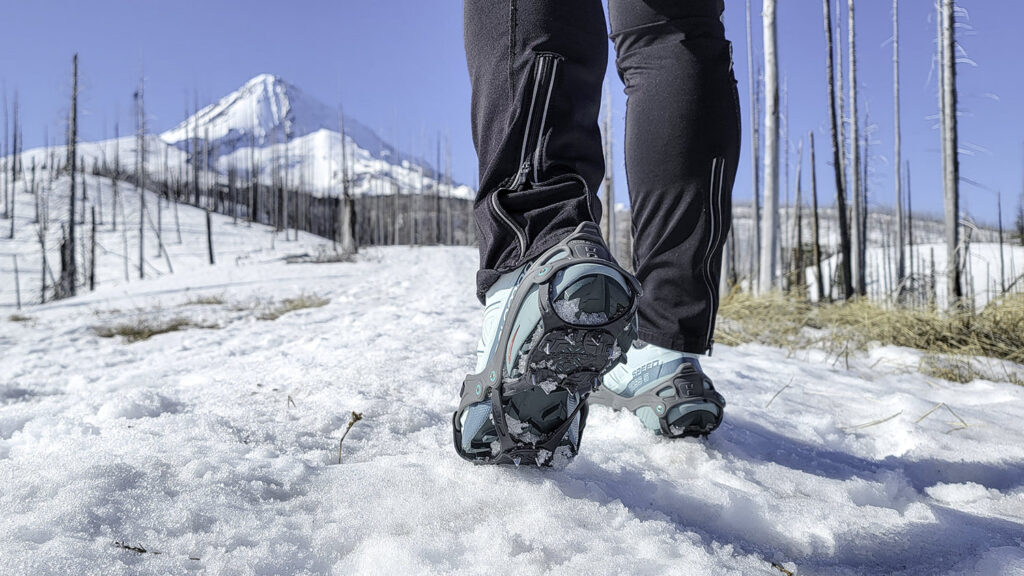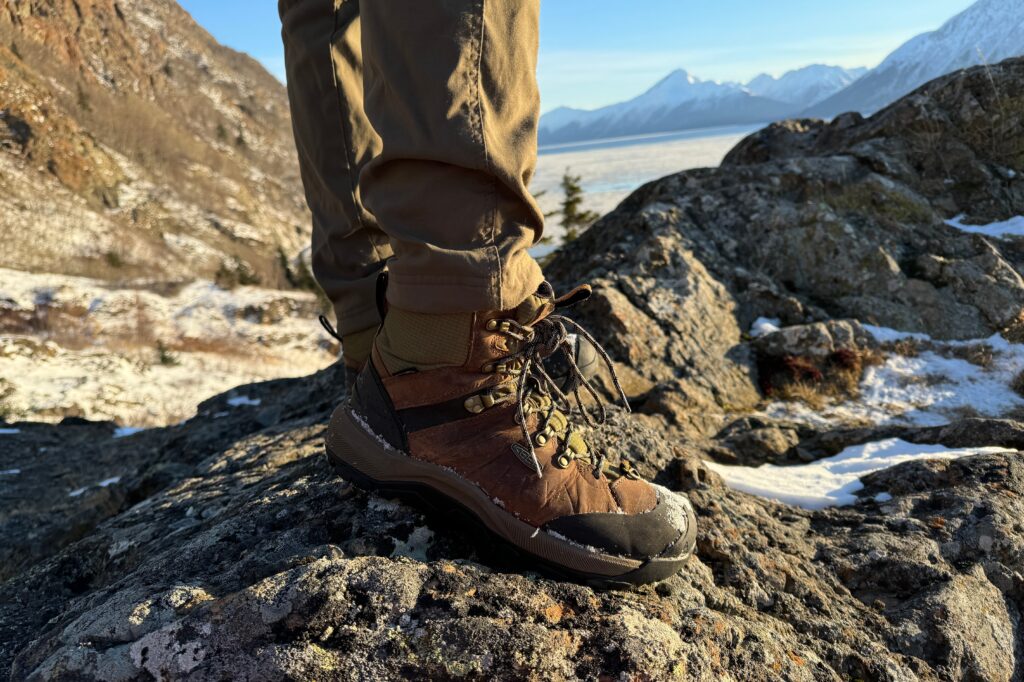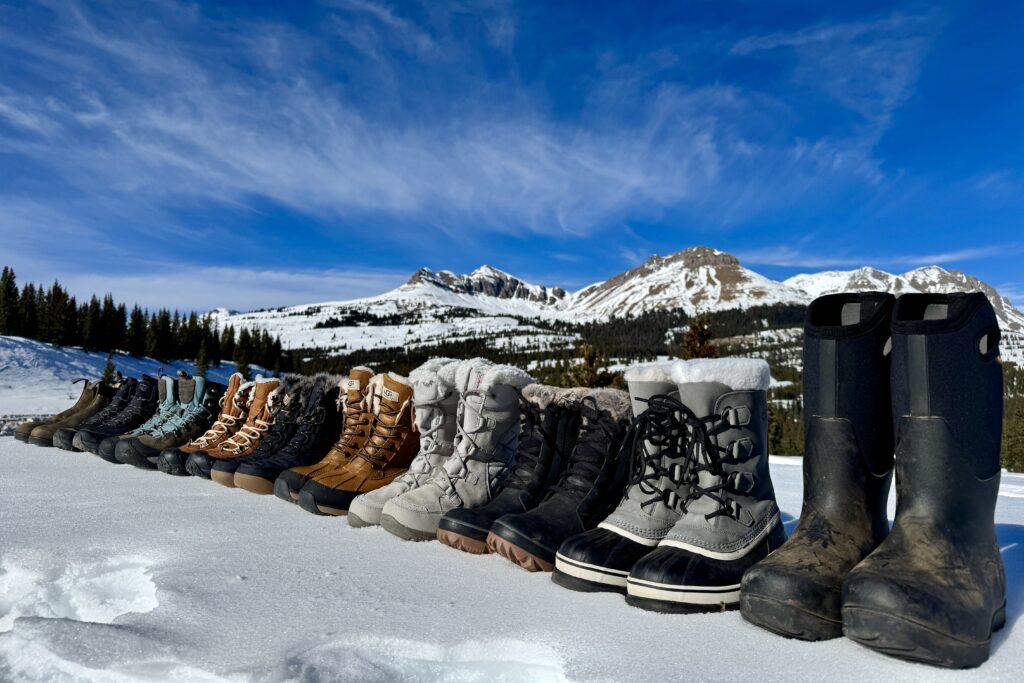
Rain, snow, and mud don’t have to dampen your day outdoors. There are many boots designed to keep your feet dry, no matter where you go or what you do. We tested winter boots for weight, water resistance, warmth, comfort, and traction to identify the 13 best models.
From brands like Oboz, UGG, Bogs, Merrell, KEEN, and more, we trekked in Alaska, Colorado, and Washington state in the serious cold over the course of five months and over 300 miles.
While testing the boots, we always paired each boot with quality hiking socks. This can add warmth as well as reduce blisters due to rubbing. We have also used some of these boots with snowshoes and traction devices when and where you can go on adventures.
If you still want support and durability with a little less insulation, take a look at our list of the best hiking boots for women.
Quick Picks for Women’s Winter Boots
Check out this quick list of our favorites, or continue scrolling to see our full list of the best winter boots with in-depth reviews.
Best Women’s Winter Boot Overall: Oboz Bridger 7” Insulated ($210)
Most Versatile Boot: UGG Adirondack XXV ($250)
Best Boot for Casual Use: Blundstone Thermal Women’s Chelsea ($240)
Best Slip-on Boot: Bogs Arcata Winter Boot ($185)
Best Winter Hiking Boot for Traction: Salomon Toundra Pro ($200)
Most Comfortable Winter Boot: Columbia Minx Shorty IV ($110)
Best Waterproof Boot: Bogs Neo Classic Tall ($155)
Best Lightweight Hiking Boot: Merrell Thermo Chill Mid 2 ($150)
Best Boot for Snow: Sorel Caribou ($225)
Best Boot for Slush & Standing Water: Xtratuf 15″ Legacy ($165)
Best Hiking Boot for Fit & Support: Keen Revel IV Polar ($190)
Best Budget Boot for Light Winter Use: Columbia Ice Maiden II ($100)
Most Affordable Boot: Dream Pairs Mid-Calf ($57
What’s new
We brought in some new winter boots and took the best into the field. After rigorously reviewing their performance capabilities, we’ve made some updates to our list:
- We added the Salomon Toundra Pro to our list, a serious winter hiking boot with great traction.
- The Xtratuf 15″ Legacy boots have been a great addition thanks to incredible water resistance.
- A new budget boot is available from Dream Pairs offering a lot of bang for the buck.
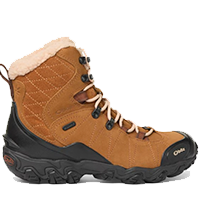
Oboz Bridger 7” Insulated
Best Winter Hiking Boots Overall
CleverHiker Rating: 4.9/5.0
Price: $210
Weight: 2 lb. 9 oz.
Temperature Rating: Not rated
Insulation: 200 g Synthetic fibers
Also Available In: 9″
Sizing: True to size
Pros
- Highly resistant to water
- Warm
- Synthetic wool lining is cozy
- Good traction
- Stylish for a hiking boot
- Gaiter attachment loops
Cons
- Expensive
- Needs a gaiter in deep snow
Our top-ranked boot, the Oboz Bridger 7”, performs well across the board, from water resistance and warmth to comfort and traction. We were particularly impressed by how resistant these boots are to moisture. Even after two hours submerged in several inches of water, they remained completely dry inside.
Furthermore, these boots didn’t get nearly as cold as the others we tested when left in a snowdrift. Although these boots are designed primarily for hiking, we wore them to the office several times. Each time we wore them, we received at least one compliment.
They are a bit on the pricey side, but they deliver such value that the cost is well justified. We recognize that these boots might not be suitable for every situation, but they are definitely a fantastic option to consider.
More: Women’s Oboz Bridger 7” Insulated Winter Boot Full Review
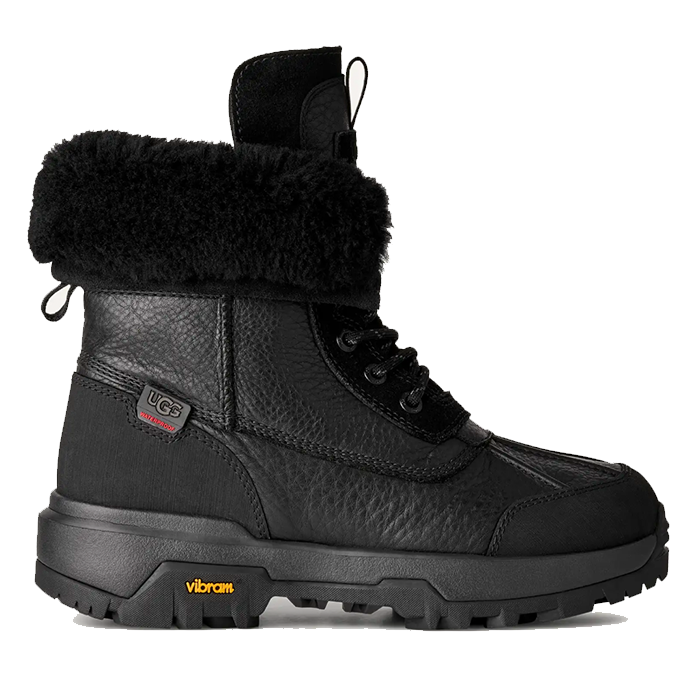
UGG Adirondack Boot XXV
Most Versatile Boot
CleverHiker Rating: 4.8/5.0
Price: $250
Weight: 2 lb. 8.6 oz.
Temperature Rating: -25°F
Insulation: 200 g Upcycled Wool
Also Available In: Tall
Sizing: Runs small; we recommend choosing a half size larger
Pros
- Warm
- Waterproof
- Versatile
- Uppers can be rolled up or down
- Lightweight for a snow boot
Cons
- Expensive
Whether you’re going out for a nice dinner in winter, shoveling snow from the driveway, or hiking on a well-packed trail, the Adirondack boots are perfect for all occasions. This boot features several aspects that make it a rockstar in every way.
The most notable feature is the wool lining, which is visible when the uppers are rolled down. Unlike the linings in many other boots, this one extends all the way inside, making it incredibly warm. The leather exterior is also functional: these boots are incredibly waterproof. They remained bone dry when submerged in several inches of water for two hours during our side-by-side test.
While wearing these boots to work for nine hours, they felt relatively comfortable, partly due to their lighter weight compared to other snow boots. Finally, they offer a respectable amount of traction, meaning they are useful for hiking as well.
Overall, they may not be the best at any single activity, whether it’s casual use, winter boot performance, or hiking. However, they excel in all three areas, offering incredible value and making them well worth the price.
More: Women’s UGG Adirondack III Winter Boot (the previous version) Full Review
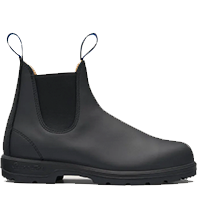
Blundstone Thermal Chelsea
Best Boot for Casual Use
CleverHiker Rating: 4.7/5.0
Price: $240
Weight: 1 lb. 13.8 oz.
Temperature Rating: Not rated
Insulation: Synthetic Fibers
Also Available In: Original, high topped boot, heeled
Sizing: Blundstones come in Australian sizing, make sure to look at the sizing chart before buying online
Pros
- Leather upper is highly water resistant
- Wool lined insole is warm
- Light weight design
- Casual aesthetic
Cons
- Expensive
- Low tops let in moisture
The Blundstone Thermal Chelsea is an excellent choice for casual winter footwear. These boots are designed more like shoes with a short upper and less aggressive tread, making them ideal for the office or running errands around town.
They perform better in snow and cold conditions compared to clogs, Vans, or other casual shoes. This is because they are made of leather with a wool-lined insert, which makes them highly resistant to moisture and warm to wear. Their shorter height also contributes to their lighter weight, making them easier to move in and more comfortable for extended periods. However, this also means they are not suitable for deep snow.
We frequently wore these boots in an office setting and found them comfortable even after nine hours on our feet, and they blended well with office attire. While these boots are somewhat pricey, considering they are made of quality leather and perform well, we believe the price is justified.
More: Women’s Blundstone Thermal Chelsea Winter Boot Full Review
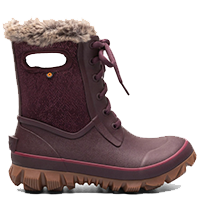
Bogs Arcata
Best Slip on Winter Boots
CleverHiker Rating: 4.6/5.0
Price: $185
Weight: 3 lb. 1 oz.
Temperature Rating: -58°F
Insulation: 7 mm Neo-tech neoprene
Also Available In: Urban leather tall, urban leather mid, urban leather chelsea
Sizing: True to sizing
Pros
- Waterproof
- Easy to slip on
- Faux fur is cozy
- Beefy tread
Cons
- Mid-height can let deep snow in
- Heavy
We love using the Bogs Arcata boots for quick trips outside in the snow. These boots were our first choice for walking the dog in the middle of the night because they’re easy to slip on and keep your feet warm.
We found the faux fur lining, in particular, made them cozy and comfortable. The neoprene construction is another significant advantage: during both side-by-side testing and field use, these boots stayed bone dry when submerged in water. This was much appreciated when our vehicle was surrounded by puddles at the end of a long day of skiing.
These boots are a bit more fashionable than other rubber boots, but they do stand out compared to some of the other models we tried. We generally avoided wearing them to the office. They are also somewhat heavy and not as adjustable as other boots. However, we still genuinely enjoyed wearing them, and our testers found them to be quite comfortable. With an average price point, we would highly recommend them.
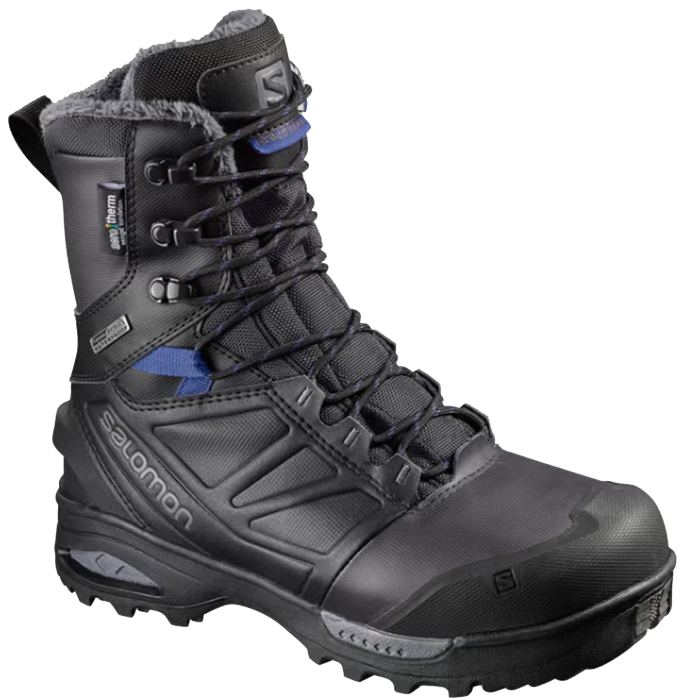
Salomon Toundra Pro
Best Winter Hiking Boot for Traction
CleverHiker Rating: 4.5/5.0
Price: $200
Weight: 1 lb. 4 oz.
Temperature Rating: -40°F
Insulation: Areotherm Aerogel
Also Available In: Toundra Forces Unisex Boot
Sizing: True to sizing
Pros
- Exceptional traction on ice
- Warm insulated design
- Secure, confidence inspiring fit
- Performs well in rugged conditions
Cons
- Feels slightly heavy on feet
- Too warm for mild conditions
- Not waterproof for long submersions
The Salomon Toundra Pro Boots stand out as one of the top women’s winter boots we tested thanks to their excellent traction, reliable warmth, and confidence-inspiring performance on snow and ice. After thorough hands-on testing, these boots quickly became our preferred choice for winter hikes in rugged, slippery conditions where footing and insulation are most important.
Traction is the key strength of the Toundra Pro. In side-by-side traction tests, these boots outperformed all others in our lineup, staying more firmly on slick rock and ice. That lab performance translated directly to real-world use on icy trails around Durango, Colorado, where we felt noticeably more secure—even when walking a large dog on refrozen, hard-packed ice. If winter hiking involves frequent freeze-thaw cycles or slick terrain, these boots provide excellent grip.
Warmth is another area where the Toundra Pro shines. During controlled cold tests and snowy hikes in the San Juan Mountains, the insulated design and faux fur lining reliably kept our feet warm with standard hiking socks. Even in deep powder near Little Molas Lake, our toes remained comfortable. On the other hand, that warmth can feel excessive during shoulder-season hikes, but for true winter conditions, it’s a significant advantage.
Comfort and build quality round out the package. The tall shaft, adjustability, and availability in half sizes allowed for a secure, comfortable fit with no hot spots during long days. The boots do feel slightly heavy, especially on dry terrain, and they eventually wet out after prolonged submersion, but neither issue detracted from their overall performance in typical winter hiking scenarios.
For women navigating cold, snowy, and icy trails, the Salomon Toundra Pro Boots provide reliable warmth, excellent traction, and all-day confidence—making them a top choice in our winter boots selection.

Columbia Minx Shorty IV
Most Comfortable Winter Boot
CleverHiker Rating: 4.4/5.0
Price: $110
Weight: 1 lb. 8 oz.
Temperature Rating: -25°F
Insulation: 200 g Synthetic Fibers
Also Available In: Regular & Mid
Sizing: True to sizing
Pros
- Affordable
- Comfortable
- Stylish
- Lots of sizing options
Cons
- Water resistant fabric is NOT waterproof
- Minimal insulation
One of our favorite shoes for outings, the Minx Shorty boasts many great features, including a minimalistic yet comfortable design. We often choose to wear these boots to work instead of others in our lineup. This is because they keep our feet from getting tired by the end of the day, are not too hot to wear indoors, are easy to move in, and pair well with various outfits.
From a performance perspective, these boots are certainly designed for winter, but they don’t perform well long-term in winter conditions. When we submerged them in several inches of water for the water resistance test, they lasted about 45 minutes before absorbing moisture. This means they are fine for walking through the occasional puddle, but probably won’t withstand a full day of rain. We also discovered that their insulation isn’t the best. This is beneficial if a significant amount of time spent in these boots will be indoors, but not ideal for sitting outside.
Given that the traction is adequate, these boots could potentially be used for shorter hikes on packed trails. However, they are best suited for casual use based on our experience. With a very affordable price tag, we highly recommend these boots as they offer great value.
More: Women’s Columbia Minx Shorty IV Winter Boot Full Review
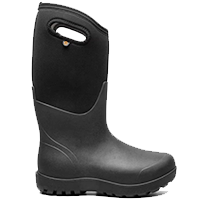
Bogs Neo Classic Tall
Best Waterproof Boot
CleverHiker Rating: 4.3/5.0
Price: $155
Weight: 3 lb. 6 oz.
Temperature Rating: -58°F
Insulation: 5 mm Neo-tech neoprene
Also Available In: Mid & Wide calf
Sizing: Runs large, we recommend sizing down half a size if you are unsure
Pros
- Durable
- Seamless neoprene lower is waterproof
- Tall height keeps out snow
- Moderate insulation is ideal for high output activities
Cons
- A bit heavy
- Not many adjustability features
Much loved by ranchers for their waterproof abilities and moderate insulation, the Bogs Neo Classic Tall boots serve as an excellent choice for outdoor work. These boots are our top pick for wet conditions because the seamless neoprene soles guarantee that water will not seep inside. The tall, fitted design of these boots also helps ensure that moisture is unlikely to enter from above.
While the tread and insulation did not perform the best during our side-by-side tests, our experience shows that they are satisfactory for outdoor work in harsh conditions. These boots are somewhat heavy, especially if not properly sized, which can result in some fatigue after a long day.
However, the advantages far outweigh any drawbacks with these boots, particularly in scenarios where durability is crucial. With a reasonable price point, these boots make a great choice for use in snowy conditions.
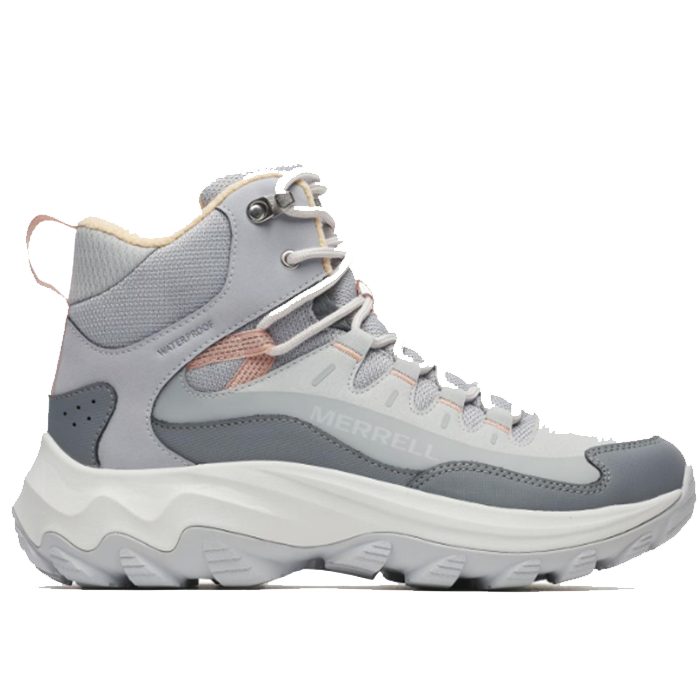
Merrell Thermo Chill Mid 2
Best Lightweight Hiking Boots
CleverHiker Rating: 4.2/5.0
Price: $150
Weight: 1 lb. 14 oz.
Temperature Rating: Not rated
Insulation: 200 g synthetic, micro-fleece lining
Also Available In: None Listed
Sizing: Fits a bit tight, we recommend sizing up half a size
Pros
- Very water resistant
- Gaiter attachment loop
- Reflective strips for nighttime visibility
- Grid fleece lining
- Light weight
- Affordable
Cons
- Ankle design may not be comfortable for everyone
- Traction is a bit lacking for a winter boot
Those looking to purchase a year round hiking boot with stellar performance in wet conditions should consider the Merrell’s Thermo Chill Mid Boots. We were incredibly impressed with this boot’s ability to stay dry even when submerged in water for extended periods. Given how lightweight this boot is, it makes an excellent choice for long hikes when puddles or other moisture are likely. It even features a gaiter attachment loop to increase water resistance.
These boots provide average insulation, making them well-suited for walking all day rather than spending extended periods without movement. Because they are specifically designed for hiking, they can be less convenient to put on and take off and do not blend in well at the office or in more casual settings. Instead, they incorporate elements like reflective strips for visibility and metal shoelace eyelets for adjustability.
We did experience some discomfort from the shape of these boots rubbing our ankles, but this can vary from person to person, depending on the size and shape of both the boots and the wearer’s feet. Overall, these are worth a try as they are affordable.
More: Women’s Merrell Thermo Chill Mid Winter Boot Full Review
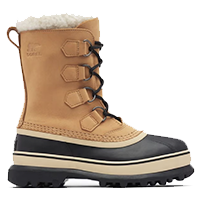
Sorel Caribou
Best Boot for Snow
CleverHiker Rating: 4.1/5.0
Price: $225
Weight: 3 lb. 6 oz.
Temperature Rating: -40°F
Insulation: 9 mm Recycled felt
Also Available In: Wool liner
Sizing: True to sizing
Pros
- Durable
- Waterproof
- Snow cuff to keep snow out of boot
- Removable felt inserts
Cons
- Expensive
- Heavy
For excellent performance in powder, the Sorel Caribou come through thanks to their excellent water resistance, moderate insulation, and decent tread. We have been using these boots for years and love them for big snow days.
They are easy to slip on, and the snow collar helps keep snow from getting inside the boots during powder days. If they get wet, the felt insert can be removed to speed up drying. One drawback of these boots is how heavy and clunky they can feel. This isn’t too noticeable for short-term use, but it can lead to foot fatigue after a long day. Proper sizing also greatly affects how easy these are to walk in.
Additionally, these boots are somewhat pricey. That said, we believe they are worth the investment as they offer exceptional durability.
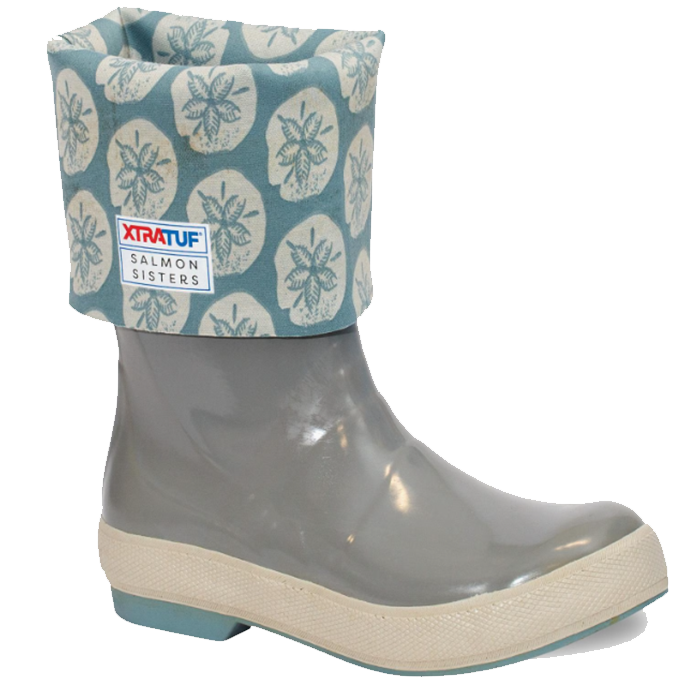
Xtratuf 15″ Legacy
Best Boot for Slush & Standing Water
CleverHiker Rating: 4.0/5.0
Price: $165
Weight: 1 lb. 12 oz.
Temperature Rating: Not rated
Insulation: None
Also Available In: 12”
Sizing: True to sizing
Pros
- Fully waterproof neoprene construction
- Excellent traction on wet surfaces
- Ideal for snow, slush, and water
- Easy to slip on
Cons
- No built in insulation
- Feels heavy on long hikes
- Limited comfort adjustability
The Xtratuf 15″ Legacy Boots are among the top winter boots we tested for wet, slick environments, providing unmatched waterproof performance and reliable traction where moisture is unavoidable. After years of real-world use and side-by-side testing, including winter hikes in Alaska and Colorado, these boots proved to be a dependable choice for snow, slush, wet trails, and beach walks where staying dry is crucial.
Water resistance is the key strength of the Xtratuf boots. In controlled tests, they stayed completely dry after more than two hours of full submersion, ranking at the top of our lineup. This performance matches our real-world experience on winter beach walks near Kachemak Bay, along stream-filled trails, and in wet snow, where they consistently kept our feet dry as long as water didn’t enter from the top.
Traction stands out as another key feature. While the tread isn’t as aggressive as on a dedicated hiking boot, the wide contact surface provided excellent grip during testing and in real-world use. We felt confident walking on wet rocks, icy roads, snowy trails, and slick surfaces, which explains why these boots have been a longtime favorite among Alaskan fishermen.
The trade-offs come in warmth, weight, and adjustability. These boots have no insulation and were the coldest in our warmth testing, so thicker socks are necessary in winter conditions. The tall neoprene design also makes them heavier than most hiking boots, and comfort customization is limited beyond removable insoles. Still, once properly sized, we’ve worn them comfortably for long walks and hikes in temperatures as low as the low 20s.
For hikers and adventurers who value dryness, traction, and durability in wet winter conditions, the Xtratuf 15″ Legacy Boots are a reliable, straightforward choice.

Keen Revel IV Polar
Best Hiking Boot for Fit & Support
CleverHiker Rating: 3.9/5.0
Price: $190
Weight: 2 lb. 8.64 oz.
Temperature Rating: -25°F
Insulation: 200 g synthetic Fiber
Also Available In: High top
Sizing: True to sizing
Pros
- Grippy tread
- Gaiter attachment loop
- Metal shoelace eyelets for durability and adjustments
Cons
- Tongue lets water leak in
The Keen Revel IV Polar is the quintessential hiking boot in both looks and feel. We like to wear this boot for hiking because it is relatively comfortable and easy to walk in. The lighter weight of this model, coupled with the shape of the ankle supports, makes hiking and climbing effortless.From our experience, the tread is grippy and offers good traction when scrambling or navigating more challenging terrain.
These boots also include features specific to hiking, such as an attachment point for gaiters and multiple points for lace adjustments.
However, we advise hikers to be cautious when using these boots in wet conditions, as they are the least water-resistant of all the boots we tested. That said, for hard-packed and dry trails in the winter, these boots are an excellent choice!
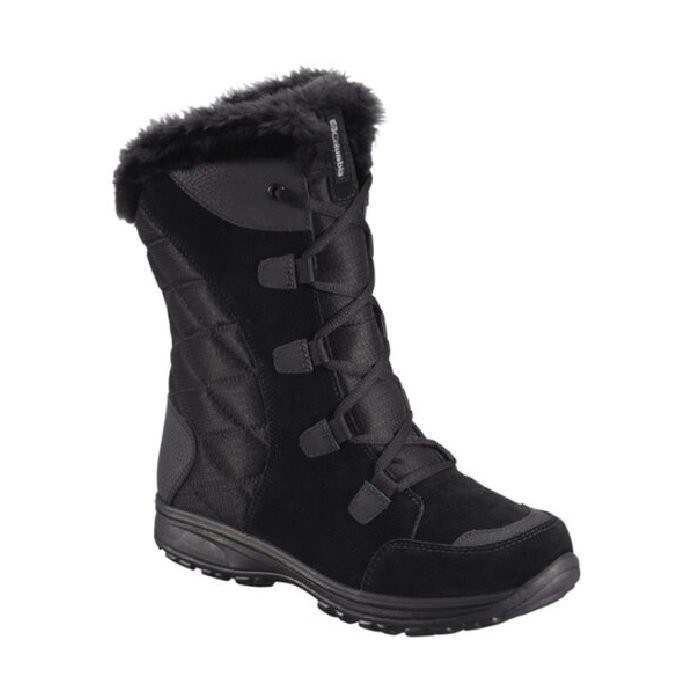
Columbia Ice Maiden II
Best Budget Boot for Light Winter Use
CleverHiker Rating: 3.8/5.0
Price: $100
Temperature Rating: -25°F
Insulation: 200 g Synthetic fibers
Weight: 2 lb. 1.6 oz.
Also Available In: Slip-On, Shorty
Sizing: True to sizing
Pros
- Minimal weight
- Easy to adjust sizing
- Cozy faux fur lining
- Stylish
- Affordable
Cons
- Wet out in less than an hour
- Not the warmest
- Traction isn’t the best
For those with places to go in the winter, the Ice Maiden makes a fantastic casual boot. We appreciate that these boots are easy to move in due to their relatively lightweight and numerous adjustment features. The faux fur lining is cozy, and the design looks great. This makes these boots ideal for running errands around town, meetups with friends, or a winter road trip.
Our favorite use for these boots was walking the dogs in town and incorporating them into our office attire. However, there are some downsides to these boots. Although they have water-resistant capabilities, they will eventually become damp inside.
They are also not the warmest option we tested. This makes them less ideal for spending long periods of time outside in inclement weather, whether hiking or working. That said, these boots are incredibly affordable and they have a decent enough performance to be a great choice in the right circumstances.
More: Women’s Columbia Ice Maiden II Winter Boot Full Review

Dream Pairs Mid-Calf Boot
Most Affordable Boot
CleverHiker Rating: 3.7/5.0
Price: $57
Temperature Rating: -25°F
Insulation: 200 g Synthetic fibers
Weight: 1 lb. 2 oz.
Also Available In: Mid-Calf Fur Snow Boots
Sizing: True to sizing
Pros
- Light weight for the size
- Excellent value for the price
- Decent traction for the price point
- Easy to walk in all day
Cons
- Limited warmth in extreme cold
- Poor waterproofing when submerged
- Durability feels budget focused
- Potential rubbing at boot shaft
The Dream Pairs Mid-Calf Boots are among the best budget-friendly women’s winter boots we tested, offering surprisingly good performance for the price, with lightweight comfort and decent traction in mild winter conditions. After side-by-side testing and wearing them on snowy hikes, casual walks, and long days around Durango, Colorado, we found these boots to be a solid entry-level option for hikers who want to stay warm and comfortable without spending a premium.
Weight stands out as a major highlight. At just 18 ounces per boot, these were among the lightest winter boots in our lineup, and the difference was immediately clear. On snowy trails and dry paths alike, the lighter design made walking feel easier and less tiring. We comfortably wore these boots for hours at a time—including full 12-hour days at the office—without feeling weighed down, which is impressive for a mid-calf winter boot.
Performance varies for warmth and water resistance. The boots remained dry during light drizzle, puddle crossings, and short snow outings, but they soaked through quickly during extended submersion. Warmth was sufficient for moderate winter conditions around town and on sunny hikes, but they struggled to retain heat during longer cold tests. These limitations are typical for this price range and can be managed with careful use.
Comfort and durability reflect the budget level of the construction. Most days, the boots were comfortable, but we did experience blisters caused by the shaft losing its shape during one long hike. Thicker socks helped reduce this issue, but it’s something to keep in mind.
For beginners, occasional winter hikers, or anyone prioritizing value above all else, the Dream Pairs Mid-Calf Boots offer reliable performance at a fraction of the price of premium options.
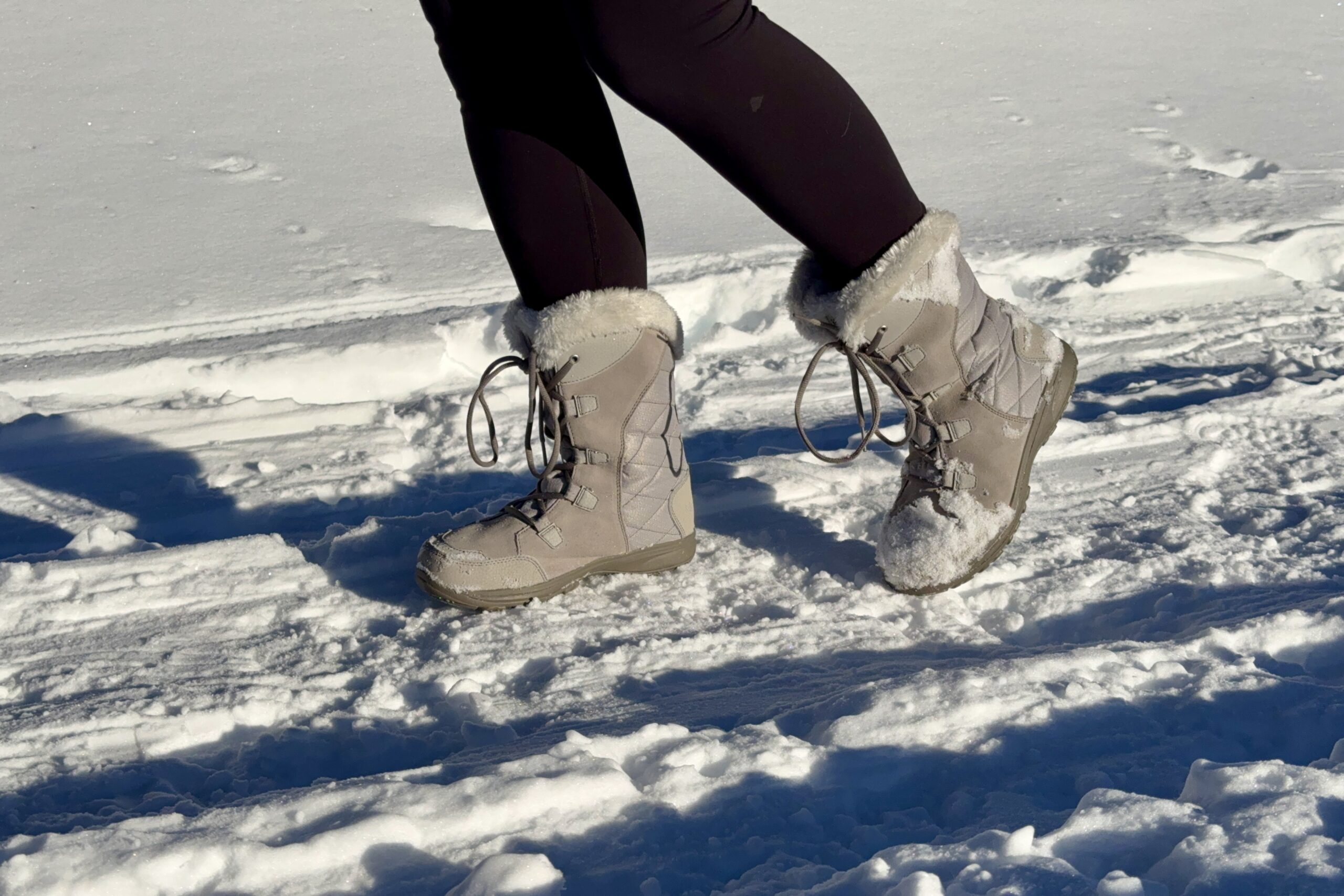
Product Comparison Table
| oSort | Product | Price | Weight | Temperature Rating | Insulation | Also Available In | Sizing | Weight Score | Water Resistance | Warmth | Comfort | Traction | 0 |
Oboz Bridger 7” Insulated View at REI View at Amazon |
$210 | 2 lb. 9 oz. | Not rated | 200 g Synthetic fibers | 9″ | True to size | 4.1 | 4.5 | 4.9 | 4.7 | 4.9 | 1 |
UGG Adirondack III View at Amazon View at Backcountry |
$250 | 2 lb. 8.6 oz. | -25°F | 200 g Upcycled Wool | Tall | Runs small; we recommend choosing a half size larger | 4.2 | 4.7 | 4.8 | 4.6 | 4.6 | 2 |
Blundstone Thermal Chelsea View at Amazon |
$240 | 1 lb. 13.8 oz. | Not rated | Synthetic Fibers | Original, high topped boot, heeled | Blundstones come in Australian sizing, make sure to look at the sizing chart before buying online | 4.8 | 4.1 | 4.7 | 4.0 | 4.4 | 3 |
Bogs Arcata View at REI View at Amazon |
$185 | 3 lb. 1 oz. | -58°F | 7 mm Neo-tech neoprene | Urban leather tall, urban leather mid, urban leather chelsea | True to sizing | 3.9 | 4.8 | 4.5 | 4.0 | 4.2 | 4 |
Salomon Toundra Pro View at Salomon |
$200 | 1 lb. 4 oz. | -40°F | Areotherm Aerogel | Toundra Forces Unisex Boot | True to sizing | 4.1 | 3.9 | 4.4 | 4.3 | 4.9 | 5 |
Columbia Minx Shorty IV View at Amazon View at Columbia |
$110 | 1 lb. 8 oz. | -25°F | 200 g Synthetic Fibers | Regular & Mid | True to sizing | 4.9 | 3.7 | 3.7 | 4.9 | 4.3 | 6 |
Bogs Neo Classic Tall View at Amazon |
$155 | 3 lb. 6 oz. | -58°F | 5 mm Neo-tech neoprene | Mid & Wide calf | Runs large, we recommend sizing down half a size if you are unsure | 3.7 | 5.0 | 4.0 | 4.0 | 4.2 | 7 |
Columbia Ice Maiden II View at Amazon View at Columbia |
$100 | 2 lb. 1.6 oz. | -25°F | 200 g Synthetic fibers | Slip-On, Shorty | True to sizing | 4.5 | 3.8 | 3.8 | 4.8 | 3.9 | 8 |
Sorel Caribou View at REI View at Amazon |
$225 | 3 lb. 6 oz. | -40°F | 9 mm Recycled felt | Wool liner | True to sizing | 3.5 | 4.7 | 3.8 | 4.5 | 4.2 | 9 |
Xtratuf 15″ Legacy View at REI View at Amazon |
$165 | 1 lb. 12 oz. | Not rated | None | 12” | True to sizing | 3.6 | 5.0 | 3.6 | 4.0 | 4.5 | 10 |
Keen Revel IV Polar View at Amazon |
$190 | 2 lb. 8.64 oz. | -25°F | 200 g synthetic Fiber | High top | True to sizing | 4.1 | 3.4 | 4.3 | 4.2 | 4.7 | 11 |
Dream Pairs Mid-Calf Boot View at Amazon |
$57 | 1 lb. 2 oz. | -25°F | 200 g Synthetic fibers | Mid-Calf Fur Snow Boots | True to sizing | 4.3 | 3.6 | 3.8 | 3.9 | 4.3 | 12 |
Merrell Thermo Chill Mid 2 View at REI View at Amazon |
$150 | 1 lb. 14 oz. | Not rated | 200 g synthetic, micro-fleece lining | None Listed | Fits a bit tight, we recommend sizing up half a size | 4.6 | 4.5 | 4.1 | 3.6 | 4.0 |
|---|
How We Test & Methodology
We rigorously tested each set of winter boots using various metrics to determine which one is the best. Our process evaluated weight, water resistance, warmth, comfort, and traction. We wore these boots daily to work, around town, at the ski hill, and on hikes to help us find the best boot.
WEIGHT
Our process involved weighing each boot individually with a kitchen scale, then ranking them from first to thirteenth based on their weights. Each boot received a score according to its rank. Based on our experience, the heavier a boot is, the more tiring it becomes to walk in.
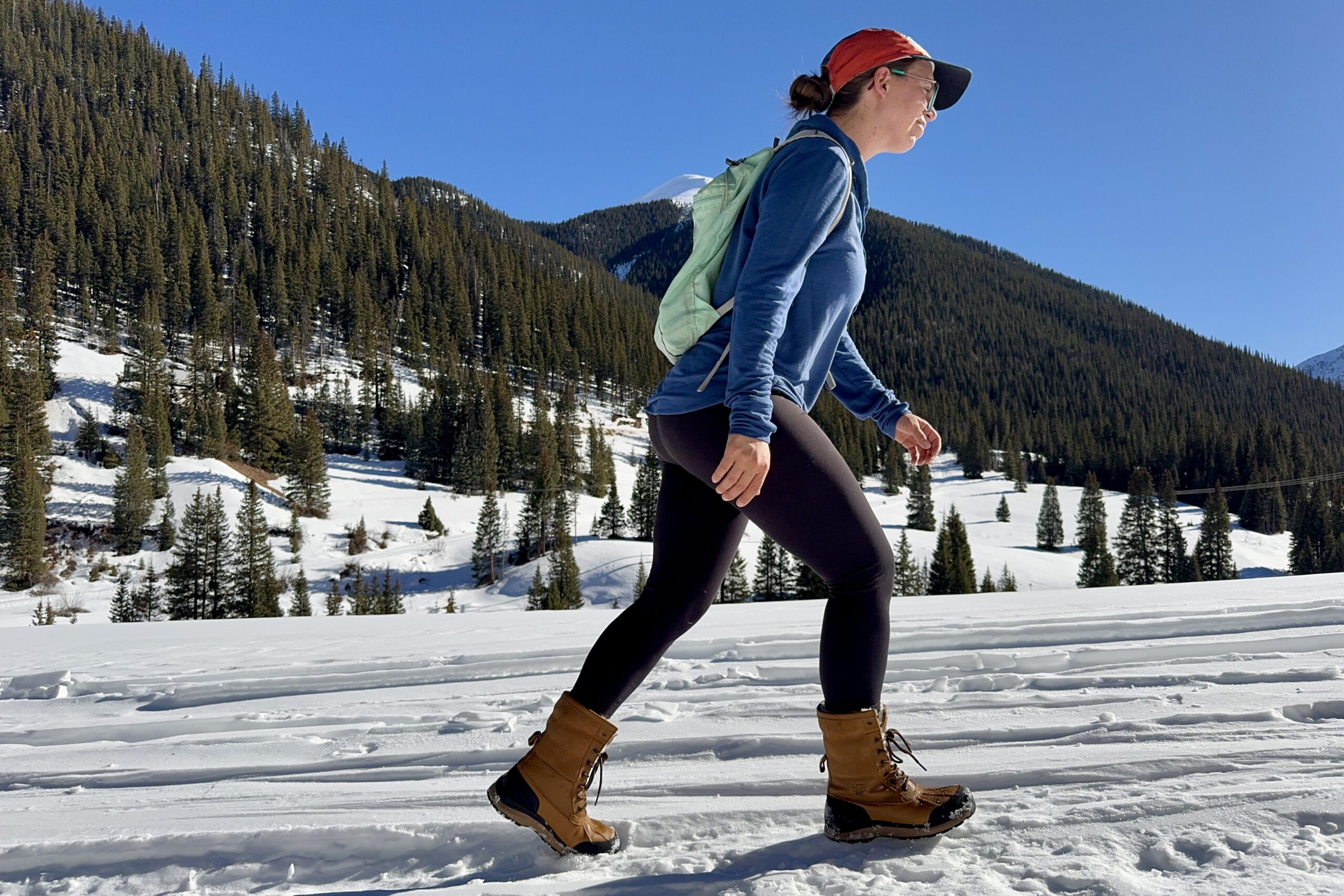
WATER RESISTANCE
Keeping out water is critical in wet and cold weather, which is why we wanted to test the waterproofing of each pair of boots. To do this, we filled a bathtub with a few inches of water, just enough to reach the lower laces on each boot. Then, we placed rocks in each boot since most of them would float, helping to keep the boots submerged.
We set a stopwatch to track how long the boots were in the water and a five-minute timer to remind us to check the boots. When the timer went off, we checked the inside of each boot for any signs of water leakage. If a boot leaked, we recorded the duration it had been in the water and used that information to rank each boot. The boots that lasted over two hours, which is when we stopped recording, became our top-ranked boots.
WARMTH
Cold feet are no joke, especially when it comes to standing around in the snow. We know this because our toes were frozen solid by the time we finished testing our lineup while wearing a boot that didn’t make the cut. To test warmth, we placed each boot in the snow and covered the lower part with snow.
The boots were tested side by side, and the patch of snow we selected was in the shade. It was late afternoon during the test, and the temperatures were dropping as the sun moved lower in the sky. We used an infared thermometer to measure the temperature inside each boot. We took readings as soon as the boots were placed in the snow and every five minutes over the course of half an hour. Our rankings are based on the lowest temperature reading for each boot, which occurred at the 25-minute mark.
COMFORT
We concentrated on features that let people customize or find the best fit in each model. This is because comfort can be hard to judge since everyone has different feet, and what feels comfortable to one person might be uncomfortable for another.
The more customization options available, the higher the likelihood that someone can find a version that suits their comfort needs. We specifically examined whether each model offers half sizes, a wide toe box option, removable inserts for orthotics, adjustable lacing, and responsive customer service for returns or trying out a different version if necessary. Subsequently, we ranked each model based on the number of these features it offers.
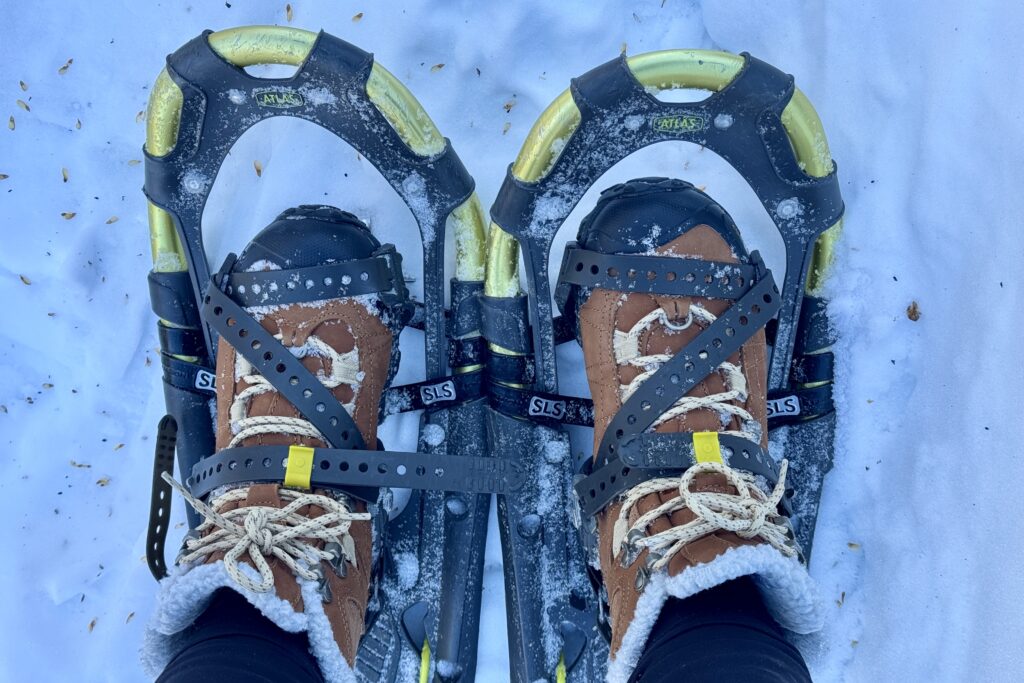
TRACTION
To test the traction of each boot, we built a traction machine to evaluate the friction of of the tread on the soles. It is important to us to ensure that everything is as consistent as possible during testing, which is why we chose this method. The machine consisted of a rotating lever arm with a flat rock at the end. Each boot was placed on the rock, and then the arm was slowly raised. As the angle between the ground and the bottom of the boot increased, gravity had a greater impact on the boot. More friction was needed to prevent the boot from sliding off the rock. The boot with the best traction achieved the largest angle measurement before it ultimately fell off, thereby securing the best ranking. We used a construction protractor to measure the angle.
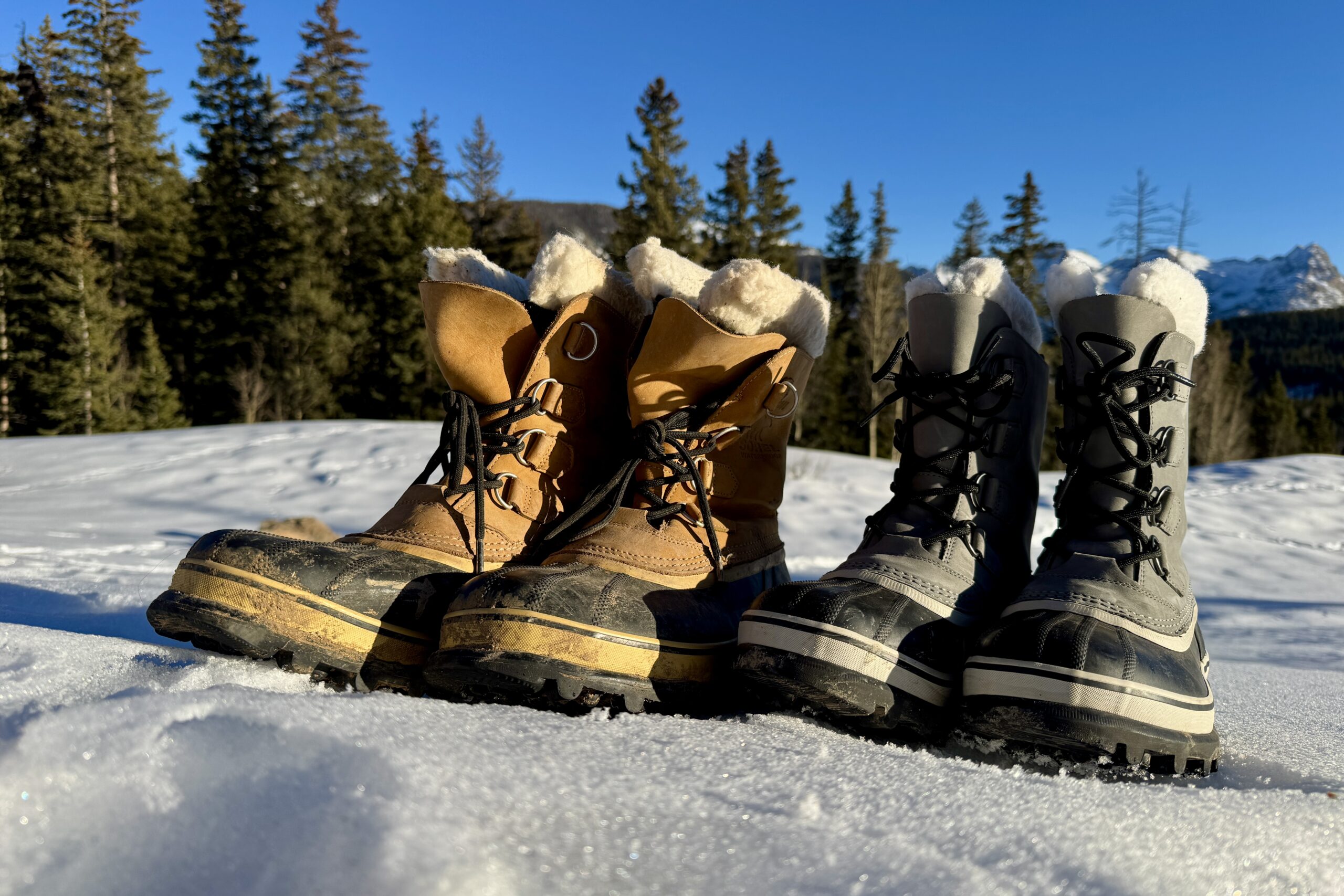
Why Trust CleverHiker
Gear analyst Bailey Bremner has spent over 700 nights and nearly 9,000 miles on trails across the U.S., in addition to growing up and living in snowy environments her whole life. Living in Alaska, in particular, helped her appreciate the importance of a good winter boot. When she isn’t out backpacking, she enjoys downhill skiing, Nordic skiing, and snowshoeing.
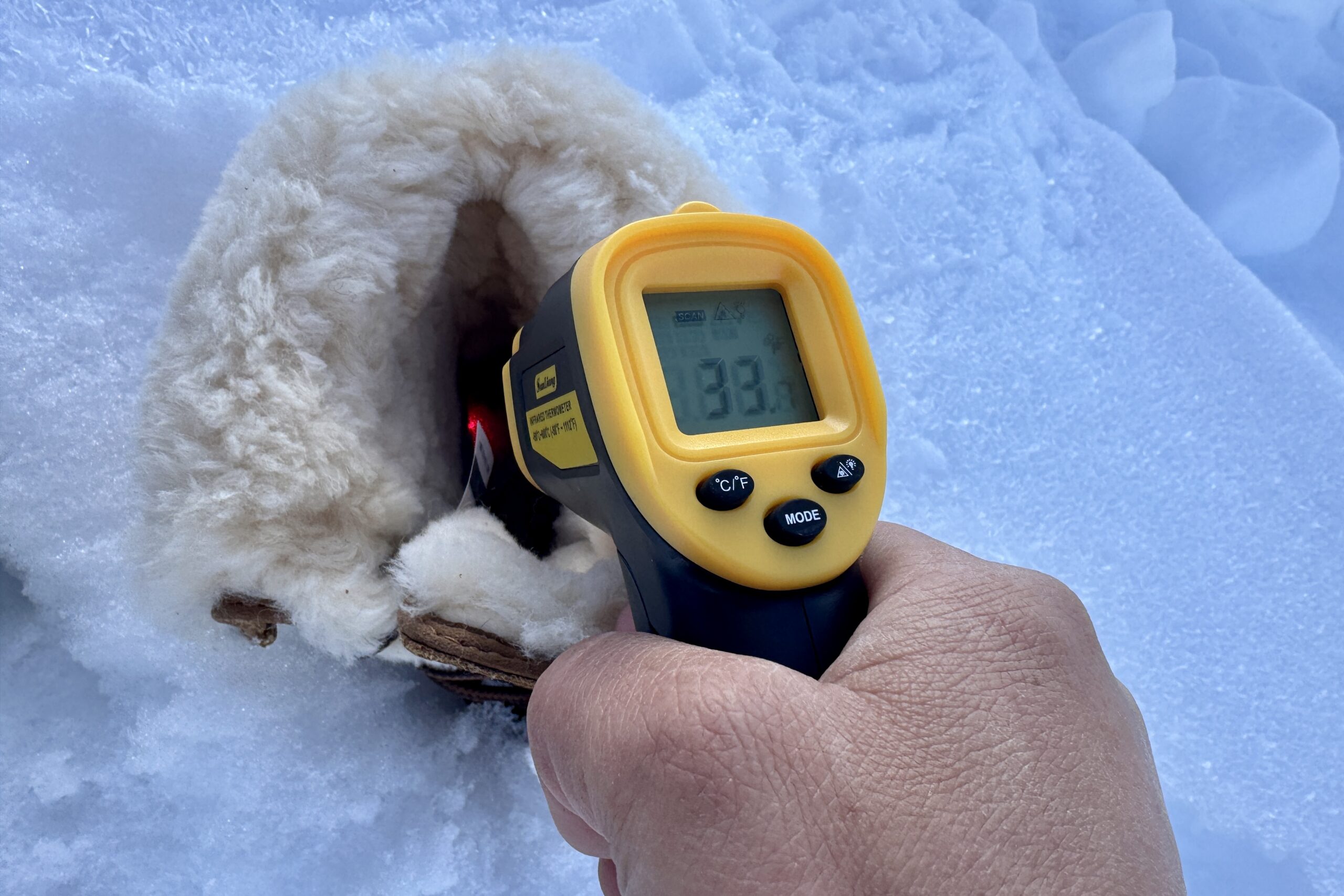
Analysis & Results
We rank winter boots using five metrics: weight, water resistance, warmth, comfort, and traction, while also taking their value into account. Our comparative results below highlight the top performers in each metric.
VALUE
We genuinely love using every pair of boots in this review, as each has unique strengths for different occasions. Because of this, we believe that all of these boots offer considerable value when used appropriately. Some of the boots we tested can be on the expensive side, but they typically feature genuine leather construction. This material is durable and performs exceptionally well in wet conditions, making the price worthwhile in these instances. Most of the more affordable options are crafted from less expensive materials. We still appreciate these boots; however, they tend to be less versatile overall.
Our top picks for value go to the Oboz Bridger 7”, Columbia Minx Shorty IV, Columbia Ice Maiden, and Dream Pairs Mid-Calf Boots. Even though the Oboz were a bit more expensive, as our top-performing boot, it is easy to justify the cost. The Minx Shorties, Ice Maidens, and Dream Pairs boots were all recognized as Budget Buys for their affordable price tag. Don’t let that fool you, though; they still bring a lot to the table.
The Bogs Neo Classic Tall and Merrell Thermo Chill boots both fell in the middle for value. Though they might not offer quite as much bang for the buck as our top value choices, they still had a solid all-around performance with a modest price tag.
The boots that ended up above the trendline, specifically the Ugg Adirondacks, Blundstone Thermal Chelsea, Salomon Toundra, Bogs Arcata, Keen Revel IV Polar, Sorel Caribou, and Xtratuf 15″ Legacy, all still make great choices. The UGGs in particular are made with high-quality materials that may be worth it for those looking for durability. The other boots still make great buys, but it is important to consider what they will be used for. An example would be that the Toundra boots offer great value for rugged winter hikes, but may not offer as much value as a town-to-trail boot.
WEIGHT
Generally, casual and minimalist designs are lighter than taller snow boots, while hiking-specific boots typically fall somewhere in between. When we placed one boot from each pair on a kitchen scale, we found that the Columbia Minx Shorty IV was the lightest model at 13 ounces. The Blundstone Thermal Women’s Chelsea, Merrell Thermo Chill Mid 2, and Columbia Ice Maiden II closely followed at 14.9, 15.8, and 16.2 ounces, respectively. All four of these boots are easier to move in due to their light weight and offer more comfort for extended wear when properly fitted.
Behind the front runners, the UGG Adirondack XXV and Dream Pairs Mid-Calf Boots strike a nice balance between protective coverage, features, and weight. The Dream Pairs weighed in at 18.4 ounces and the UGGs registered at 20.3 on our scale.
The middle of the pack consisted mainly of hiking-specific boots with the Keen Revel IV Polar, Oboz Bridger 7”, and Salomon Toundra Pros, all weighing about 21 ounces. In contrast, the heavy-duty boots weighed significantly more. When we weighed the Bogs Neo Classic Tall boots, the scale showed 27.2 ounces, or about 1.7 pounds. The Sorel Caribou were even heavier at 31.6 ounces, nearly two pounds! The Bogs Arcata and Xtratuf 15″ Legacy boots were also in this range. Based on our experience wearing all of these boots, that extra weight can lead to foot fatigue after a long day and make walking more frustrating. Properly fitting the boots can help mitigate this issue.
WATER RESISTANCE
The materials and overall design of the boot significantly influence water resistance. Some of the boots we tested are completely waterproof as long as moisture does not enter from the top. Leather and neoprene rubber are both great choices to prevent water from getting in. Other boots are simply water-resistant and will wet out after a certain amount of time. Thanks to the neoprene material and seamless design, the Xtratuf 15″ Legacy, Bogs Neo Classic Tall, and Bogs Arcata boots are all entirely waterproof.
We rated the Neo Classic Tall and Xtratuf boots higher because the tall upper can keep more moisture out than the Arcata boots. Conversely, the Keen Revel IV Polar boots became wet inside after less than 20 minutes during our testing. While the lower part of the boot is made of leather, making it waterproof, the tongue is fabric and soaked up water immediately. Additionally, the gusseting on the tongue does not rise as high as on other models. We noticed a similar issue with the Salmon Toundra Pro and Dream Pairs Mid-Calf boots.
Both Columbia boots also struggled with moisture. The Ice Maiden II and Minx Shorty IV feature extensive fabric on both the lower and upper parts of the boot. Although treated for water resistance, it takes about 45 minutes for both of these boots to wet out.
The Ugg Adirondack XXV, Sorel Caribou, Oboz Bridger 7”, and Merrell Thermo Chill Mid 2 all stayed dry for the full two hours. We ranked them slightly lower than our top performers due to higher probability of wetting out from shorter shaft heights and gusseting on the tongues. The Blundstone Thermal Chelsea boots also did quite well, but water eventually soaked through the stretchy material on the sides of the ankles.
WARMTH
During the warmth test, we discovered several boots with excellent insulation. At the top of our list is the Oboz Bridger 7”, which ranked as the warmest after spending time in the snow during the test, and it was also one of the warmest models we used in the field. The overall insulation of this boot is impressive, and the synthetic wool at the cuff feels nice and cozy.
Another favorite of ours is the UGG Adirondack XXV. This boot features recycled wool on both the cuff and throughout the entire boot, making it both warm and extremely comfortable to wear. This was particularly evident when we wore it indoors as well as during the side-by-side test.
Other boots at the top of the list include the Blundstone Thermal Chelsea boots, which feature a wool insole for insulation from the ground. The Bogs Arcata and Salomon Toundra Pro are also made from very insulating materials and have a warm faux fur lining. The Keen Revel IV Polar and Merrell Thermo Chill Mid 2 round out the middle of the lineup with good insulation, but no special lining.
Towards the bottom of our rankings are both Columbia boots, Sorel Caribou, Bogs Neo Classic Tall, Dream Pairs Mid-Calf, and Xtratuf 15″ Legacy boots. The Sorel combines rubber and leather for the outside of the boots, but the inside is made of a felt liner. This is ideal for high-output activities like shoveling, but it may not provide as much warmth for sitting around. Similarly, the Bogs have good insulation, but no special lining.
The Ice Maiden II, Minx Shorty IV, and Dream Pairs also had cold internal temperatures when we placed them in a snowdrift. All of these boots are more affordable than others on the list, suggesting that the insulation is likely not of as high a quality. We ranked the Xtratuf last because they do not have any insulation and can be quite cold when standing still, in our experience.
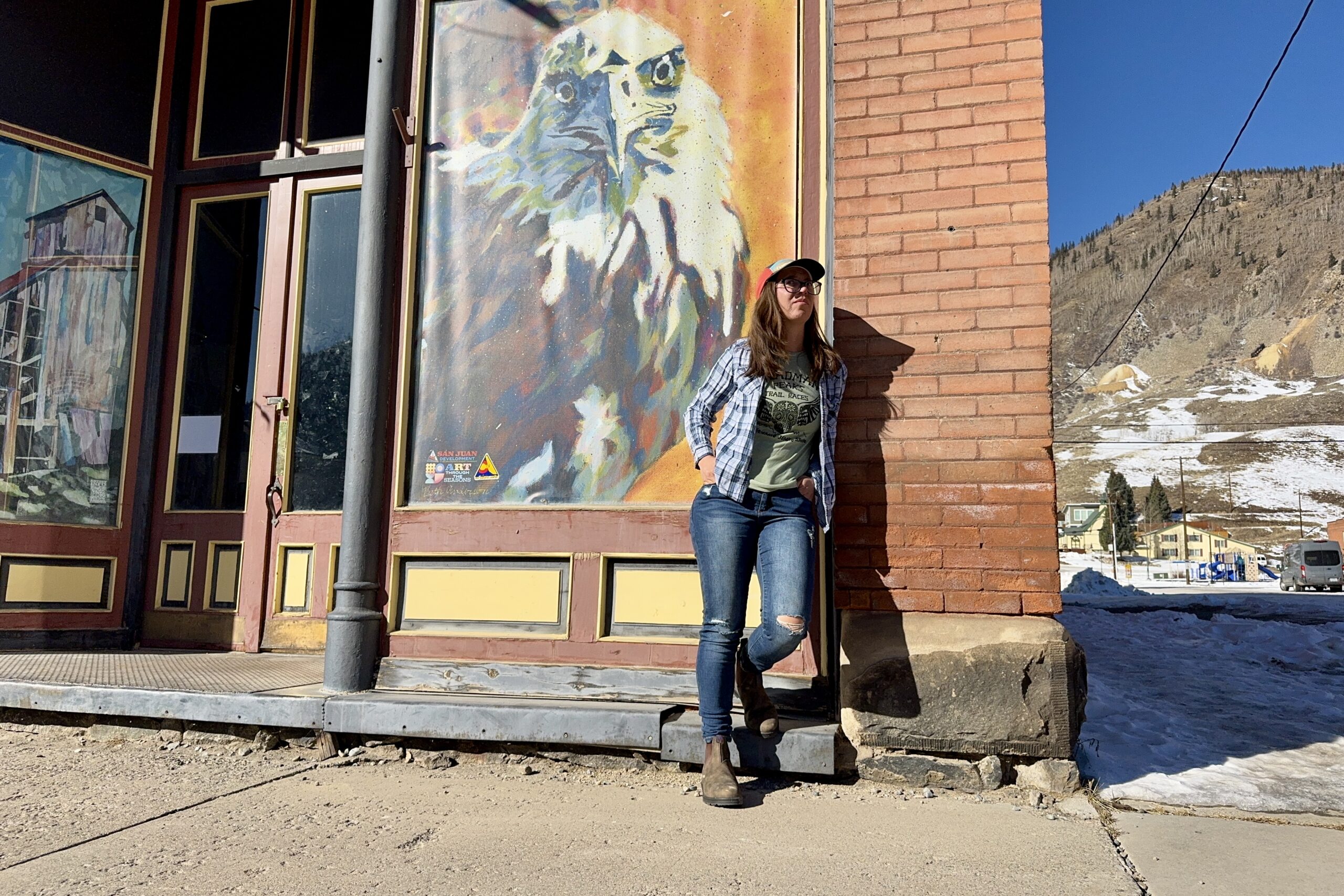
COMFORT
We have a clear winner when it comes to comfort. The Columbia Minx Shorty IV offers various sizing options and adjustability points, making this boot comfortable for a wide range of users. Its extremely lightweight design also enhances comfort, requiring less effort to move, especially over extended periods.
Our experience showed that these boots felt great for all-day wear. The Columbia Ice Maiden II shares many of the same comfort features but is slightly heavier, resulting in some foot fatigue, which is why it ranked second.
Not far behind, the Oboz Bridger 7”, Ugg Adirondack XXV, and Sorel Caribou are all missing just one of the features we look for when ranking for comfort. We looked at weight and the accuracy of sizing when assigning final rankings. The Salomon Toundra Pro and Keen Revel IV Polar boots fell in the middle of the lineup due to a few missing adjustability options and slightly less comfort in the field.
We didn’t experience any major comfort issues with the Bogs Neo Classic Tall, Bogs Arcata Snow Boots, Blundstone Thermal Chelsea, or Xtratuf 15″ Legacy boots. Still, they lack a variety of sizing options and adjustable features. This is important as if they don’t work for a foot style, there is little that can be done to fix the problem short of returning them.
The Dream Pairs Mid-Calf boots were hit or miss for us. They offered several adjustability features, but we found, through significant use, that the lower-quality materials could occasionally lead to rubbing. The Merrell Thermo Chill Mid 2’s were a bit disappointing for us. They have many excellent attributes, but the ankle shape didn’t align well with our tester’s leg shape, leading to significant discomfort.
TRACTION
We used a combination of the traction machine we built, the tread surface area, and our own experience with these boots to rank them. After concluding these tests, we found that the Salomon Toundra Pro and Oboz Bridger 7” had the best overall traction. These boots performed really well on the traction machine and also have beefy tread that is suitable for hiking. The Toundra boots in particular were noticeably better on ice than any boot in our lineup.
The Keen Revel IV Polar also has a great grip thanks to sticky material on the soles and a tread with a lot of surface area. We liked the UGG Adirondack XXV during the side-by-side test and found through years of use that the Xtratuf 15″ Legacy boots do really well on slick, wet surfaces like ocean rocks and ice.
In the middle of our lineup, the Blundstone Thermal Chelsea, Dream Pairs Mid-Calf, and Columbia Minx Shorty IV all surprised us with how well they handled slick surfaces given they did not have aggressive tread. Conversely, the Bogs Arcata, Sorel Caribou, and Bogs Neo Classic Tall all had more impressive tread, but did not perform as well in our side-by-side tests or on local hikes.
The Merrell Thermo Chill Mid 2 and Columbia Ice Maiden II ranked lowest due to their poor performance in side-by-side testing and the Ice Maiden’s minimal lugs on the boot bottoms.

How to Choose WINTER BOOTS
PRICE
Materials like insulation and waterproofing can significantly impact price. While the most expensive isn’t always the best, selecting a boot that provides good value and performance relative to the cost will help to maximize comfort.
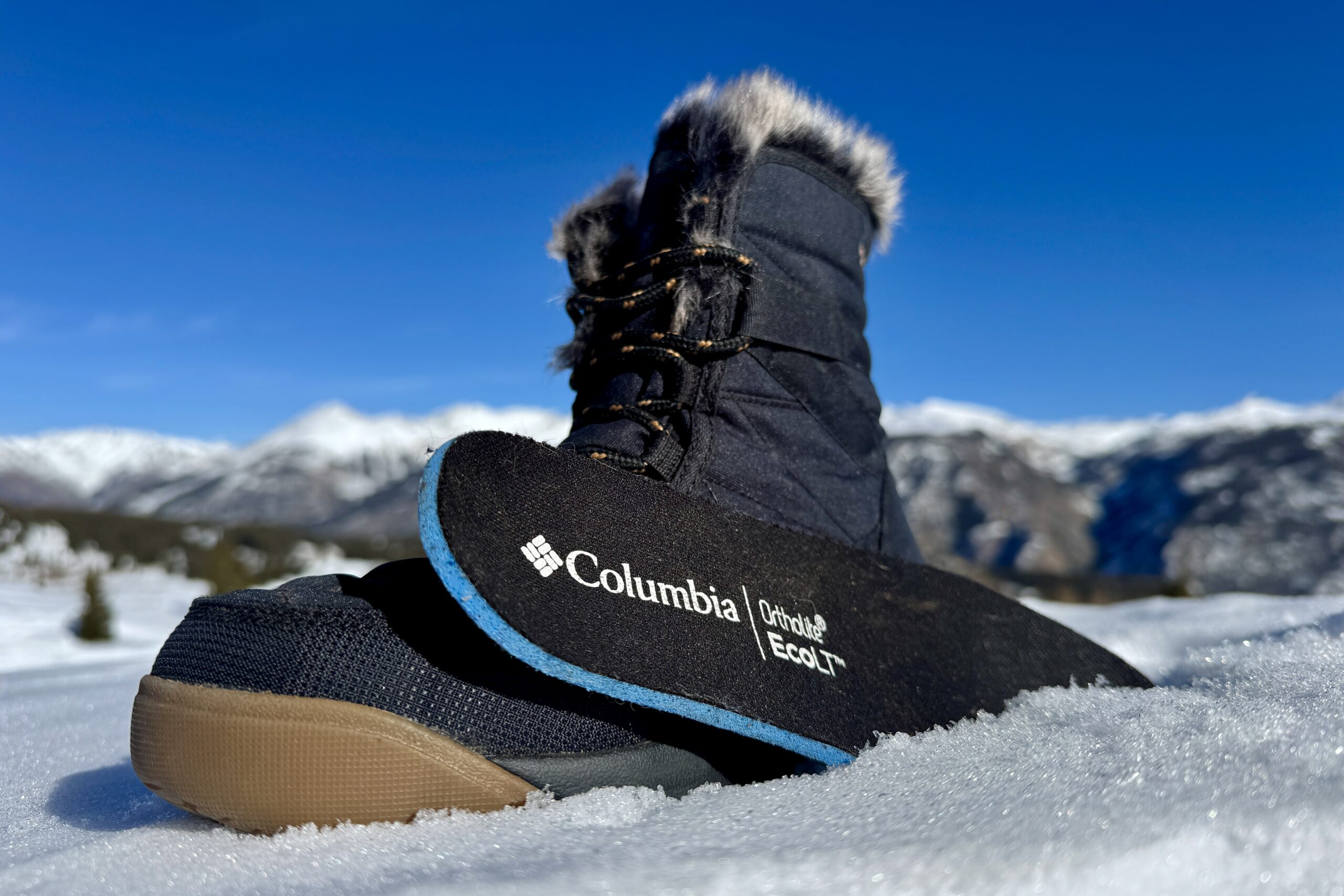
USAGE
There is a wide variety of differences in the boots we tested. Some boots are designed for hiking, while others have features that make them ideal for shoveling snow or walking around town. Ankle-high boots with variable lug patterns are better suited for hiking. In contrast, taller boots with more insulation are great for driving to work on a snowy day. It’s worth considering the primary activity for which the boot will be used before purchasing it.
INSULATION
The intended use will also help determine how much insulation is needed. Activities like hiking, which involve a lot of movement, require less insulation than boots designed for riding snowmobiles. Winter-specific boots are generally insulated with materials such as fleece, wool, or synthetic fibers. As a result, feet usually do not get extremely cold when wearing them.
Thick socks can provide additional insulation, particularly for uninsulated, waterproof boots. Just ensure to select a size that has extra room to accommodate the socks.
BOOT HEIGHT AND GAITERS
Taller boots are ideal for cold weather and deep snow because they do a better job of keeping out moisture. However, ankle-height boots are usually easier to walk and move in. A good compromise can be found by using winter-specific gaiters.
These attach to the bottom of the boot and cover the opening at the top to prevent moisture coming in. We like gaiters because they can typically be used with any style of footwear, and they increase overall comfort. Some boots even feature dedicated attachment points for the gaiters.
TRACTION
Activities with a lot of movement, such as hiking, or in areas with lots of ice will require more traction to keep from slipping. We suggest choosing boots with more aggressive tread to help with traction. If conditions are extremely slick, the boots can be paired with a traction device or crampon.
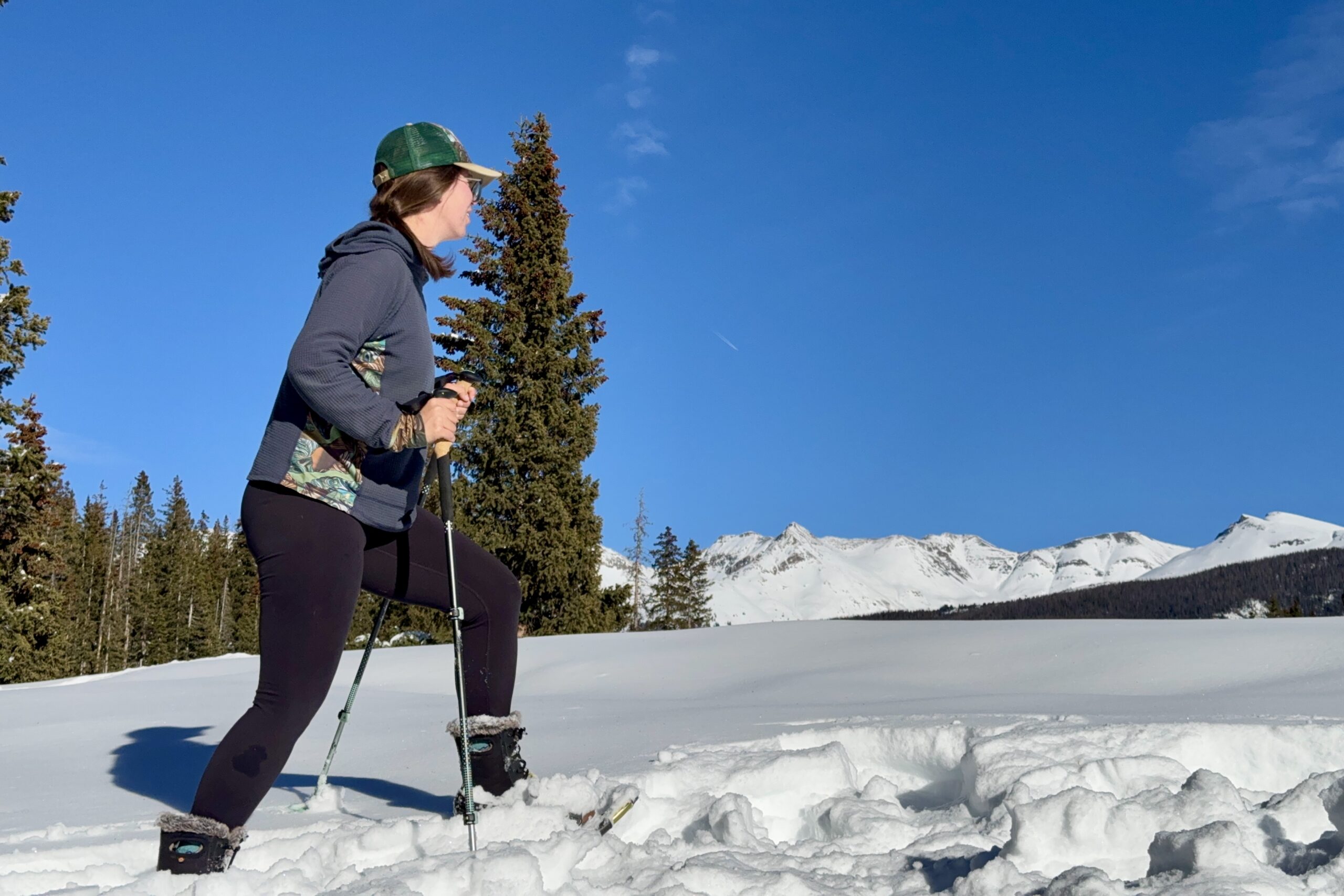
TRACTION
Activities with a lot of movement, such as hiking, or in areas with lots of ice will require more traction to keep from slipping. We suggest choosing boots with more aggressive tread to help with traction. If conditions are extremely slick, the boots can be paired with a traction device or crampon.
WEIGHT
Extra weight on the feet can be exhausting throughout the day. Bulky and heavy boots often feel awkward and challenging to wear. Heavier boots are usually warmer and better suited for cold conditions and deep snow. The intended use will again determine what weight is appropriate for the boot. Though we tend to lean towards lighter boots, selecting the proper size can also lessen the overall weight and cumbersome feel of footwear.
LINERS
There are pros and cons to choosing boots with liners. We appreciate liners because they are easy to remove and dry if they get wet. They can also be replaced, which helps extend the life of the boots. The downside is that liners typically do not fit as snugly and can be less comfortable for long periods of walking. However, this is less problematic if the boots are only used to clear snow off the car or for quick trips to the store. For boots intended for hiking or higher-paced activities, a tighter fit will make movement easier. Boot dryers can also be used to help them dry faster.
INSOLES
Upgrading the insoles can help improve the comfort and warmth of a boot. Well-known brands like Superfeet provide insoles that are warm, cushy, and more supportive than those that come with the boots. Just be sure to consider the additional space required to fit thicker insoles.
WEATHER PROOFING
Some materials are inherently more waterproof than others. Naturally, waterproof materials like rubber will repel moisture for longer periods of time than treated fabrics. It’s important to consider weak points or other areas where moisture might seep into the boot and plan accordingly during use.
Conclusion
There are many different types of winter boots, and the selection can be overwhelming! However, by considering the intended use and how each boot performs in various situations, you can narrow down the list. Our goal is to provide the necessary information to help you choose a boot for your situation, and we hope you find success.
